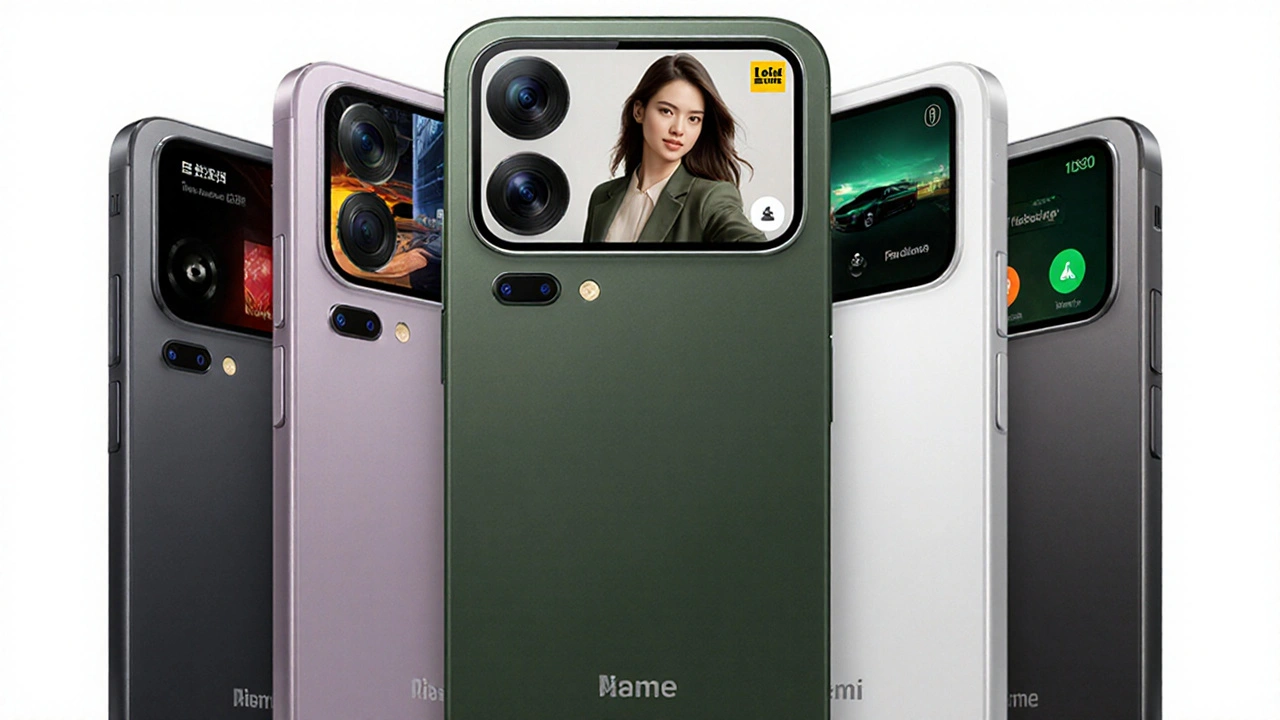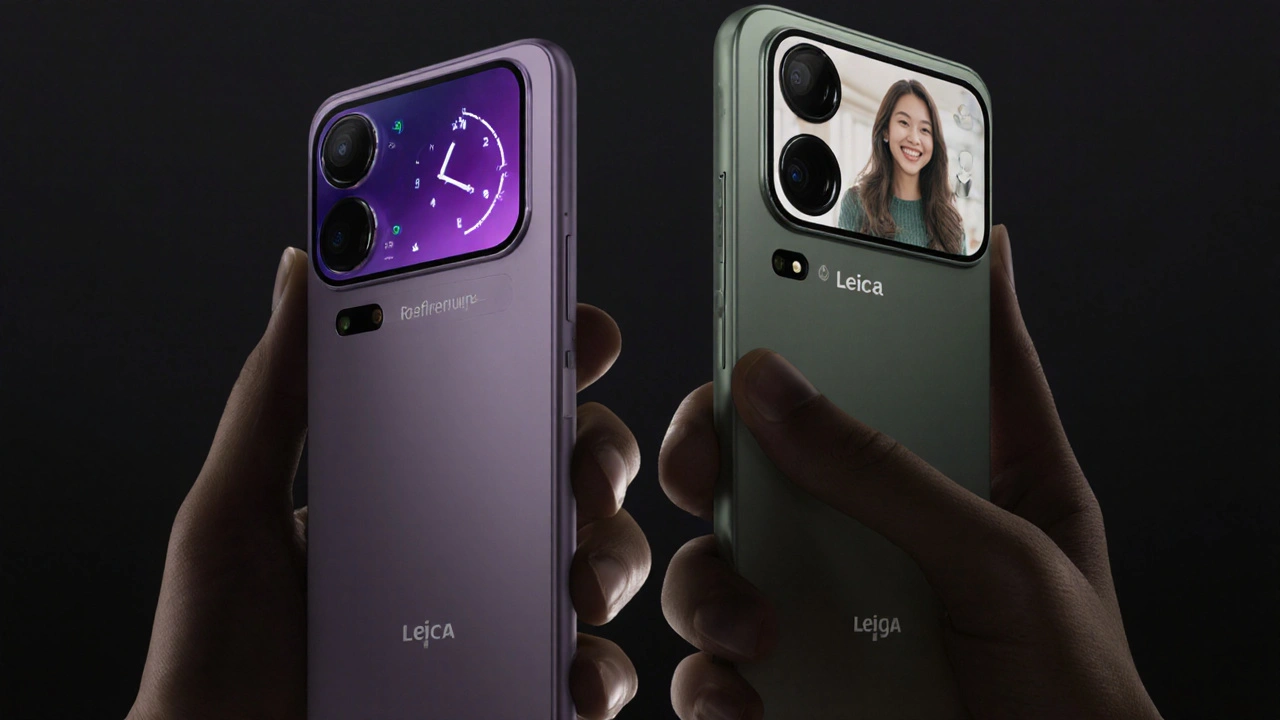Xiaomi’s newest flagship family hit the market on September 25, 2025, and the buzz is louder than a stadium chant. The company dropped three phones – the Xiaomi 17, 17 Pro and the top‑end 17 Pro Max – and immediately framed them as the iPhone 17’s toughest competition.
Battery and charging: the real differentiator
What sets the Xiaomi 17 series apart isn’t just a fresh design; it’s the raw power under the hood – literally. Xiaomi says the phones come with “ultra‑high energy density” cells that hold between 7,000 mAh and a massive 7,500 mAh. Pair that with a 100 W PPS charger using the USB‑PD protocol, and you can juice a dead battery to full in under 30 minutes.
In everyday terms, that means you can binge‑watch a whole series, hit the gym, and still have enough juice left to navigate a night out – all without hunting for a wall socket. Apple’s latest iPhone sticks to 20 W fast charging, while Samsung’s flagship tops out at 45 W, making Xiaomi’s claim of “faster than Apple and Samsung” look believable.

Specs showdown: Xiaomi versus iPhone
Beyond the battery, the 17 lineup leans on Qualcomm’s newest Snapdragon 8 Elite Gen 5, a chip that promises a noticeable lift in AI tasks and gaming performance. Coupled with Hyper OS 3, Xiaomi’s custom skin built on Android 15, the software feels snappy and AI‑savvy.
- Xiaomi 17: 6.3‑inch AMOLED, 1220 × 2656 px, 7000 mAh battery, 16 GB RAM, 512 GB storage, 100 W charging.
- Xiaomi 17 Pro: 6.6‑inch QHD+ panel, 7300 mAh battery, 12 GB RAM, 1 TB storage option, same chipset.
- Xiaomi 17 Pro Max: 6.9‑inch QHD AMOLED, 7500 mAh battery, up to 16 GB RAM, 1 TB internal storage, 100 W PPS charging, 463 ppi display.
Compare that to the iPhone 17 series, which offers up to a 6.1‑inch OLED screen, a maximum of 5,000 mAh battery, and 27 W fast charging. Xiaomi’s storage ceiling of 1 TB also dwarfs Apple’s 512 GB limit.
The price angle isn’t spelled out yet, but history shows Xiaomi usually undercuts the competition by 10‑15 %. If the specs hold up in real‑world tests, the combination of raw power, faster charging, and a lower price tag could sway power users who otherwise gravitate toward Apple or Samsung.
Timing couldn’t be more spot‑on. As holiday shopping ramps up and consumers start penciling in their next flagship purchase, Xiaomi is staking a claim that the future of premium phones belongs to those who can keep the screen lit longer and the charger off the wall shorter.






lol 7500mah? bro that's not a phone that's a power bank with a screen glued on. and 100w? sure. next they'll say it charges via lightning bolt. apple's 27w is fine because my phone lasts all day without me becoming a battery hoarder.
I'm curious how the thermal throttling works on these. I've had Xiaomi phones before that would throttle hard after 10 minutes of gaming. If they actually sustained that performance without turning into a space heater, that's impressive. But I need real benchmarks, not marketing fluff.
The notion that charging speed equates to superiority is fundamentally flawed. Efficiency, longevity, and user experience are the true metrics of excellence. Xiaomi's approach is aggressive but ultimately unsustainable.
so you're telling me i should trade my 5000mah iphone that lasts 2 days for a brick that weighs 250g more just so i can charge it in 25 minutes? i'll pass. also who even needs 1tb storage? you storing your entire life's memories in 4k?
THIS IS THE END OF CIVILIZATION. THEY MADE A PHONE THAT CHARGES FASTER THAN YOUR EX'S APOLOGY. 7500mah? THAT'S NOT A PHONE THAT'S A TESLA BATTERY WITH A CAMERA. I'M SORRY APPLE, YOU WERE NEVER ENOUGH. I'M LEAVING YOU FOR THIS MONSTER.
The battery isn’t the hero here. It’s the illusion of control. We think faster charging means freedom, but really, it just means we’ve trained ourselves to need constant replenishment. We are not users-we are nodes in a charging network.
If you're still using an iPhone just because it's 'premium', you're missing the point. Xiaomi is giving you more power, more storage, more speed, and likely half the price. Stop romanticizing a brand that barely innovates anymore. This isn't about loyalty-it's about logic.
7500mah? 🤯🤯🤯 I'm not even mad. I'm impressed. I'm gonna buy one just to see if i can charge it with a solar-powered paperclip. also i'm gonna name it 'the beast'. 🐉⚡
I'm so ready for this. I'm tired of my phone dying at 3pm. I want to watch netflix on the plane, take 500 photos, and still have juice for my smartwatch. This is what innovation looks like. Also the Pro Max screen looks like a mini theater. I'm sold.
I... I just... I mean, I don't know what to say... It's just... wow. 100W? 7500mAh? 16GB RAM? 1TB? That's... that's... a lot. I didn't think phones would get this powerful. I'm not even sure I need it, but... I kind of want it. Maybe. Probably.
Oh great. Another Chinese company trying to out-battery Apple. Let me guess, the camera is a glorified webcam, the software is full of bloatware, and the warranty is a joke. You think you're getting a deal? You're just getting a glorified brick with a 100W charger that’ll melt your pocket.
The 100W charging is impressive, but I’d recommend checking real-world battery degradation tests after 12 months. Fast charging can reduce lifespan if the thermal management isn’t flawless. Xiaomi’s track record is decent, but it’s worth monitoring if you plan to keep it long-term.
I’m just glad someone’s pushing boundaries. Apple’s been coasting for years. I don’t need a phone that costs $1200 and dies by noon. This feels like progress. And honestly? I’d rather have a phone that lasts all day than one that looks pretty and needs charging every 3 hours.
If you're a power user, this is the phone you've been waiting for. No more power banks. No more panic at 10%. The specs are insane, and if the software is as smooth as they say, this could be the first Android phone that makes me seriously consider switching from iPhone. Just don't forget to get a good case.
I used to think my iPhone was my sanctuary. Now I feel like I’m living in a world where everything must be faster, bigger, louder. I don’t want a phone that charges in 25 minutes. I want one that lets me forget it exists. But I guess that’s not what they’re selling anymore.
The technological advancements represented in the Xiaomi 17 series constitute a significant evolution in mobile device engineering. The integration of ultra-high energy density cells with PPS-compliant fast-charging protocols demonstrates a commendable alignment with industry standards for energy efficiency and user convenience. One must, however, remain cognizant of the long-term implications for battery lifecycle and environmental sustainability.